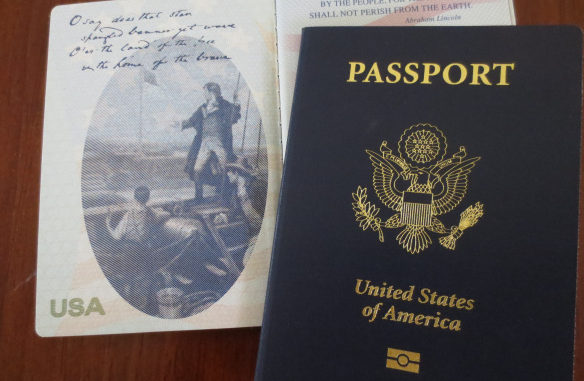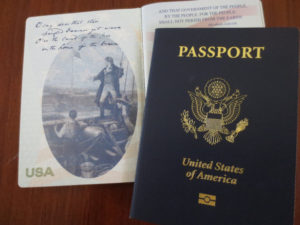
 This can be a confusing topic for most travelers , so here is information which provides you with guidelines and recommendations the next time you plan to cruise.
This can be a confusing topic for most travelers , so here is information which provides you with guidelines and recommendations the next time you plan to cruise.
U.S. Citizens on a closed-loop cruise, one that begins and ends at the same U.S. port, can use a driver’s license or government –issued ID card and a certified and/or notarized birth certificate, certificate of naturalization or certificate of citizenship. Destinations on closed-loop cruises that permit passport-free travel for U.S.citizens include Canada, Mexico, the Bahamas, Bermuda and the Caribbean.
 So here’s the catch and why cruise lines and travel agents strongly recommend that all guests travel with a valid U.S. passport during their cruise:
So here’s the catch and why cruise lines and travel agents strongly recommend that all guests travel with a valid U.S. passport during their cruise:
- If you have a medical, family, personal or business emergency and need to fly back to the U.S. before your cruise ends a passport is required or you could experience significant delays and complications.
- If you need to fly to meet your ship at the next available port should you miss your scheduled embarkation in the U.S. port or if you miss a ship’s departure from a port of call. (i.e. too many margaritas in Cozumel and you just could not make it back to your vessel!)
- Some ports may have their own entry requirements. Each individual cruise line can provide this information if there are exceptions.
 Keep in mind that if you are cruising outside of the Western Hemisphere you definitely need a passport. If your itinerary includes ports of call in South America, Europe, Asia, Africa, the Eastern Med, Australia or New Zealand you’ll need a passport. Depending on where you are headed you may also be required to fill out additional visa or reciprocity paperwork. For example, when cruising to the Baltics with a stop in St. Petersburg, Russia allows cruisers to enter without a visa as long as they remain on official shore excursions, but requires a complicated visa application for those who will tour on their own. Another example is when individuals enter Argentina or Chile as part of a South America departure, they are required to purchase a Reciprocity Fee for the country they will fly into prior to traveling.
Keep in mind that if you are cruising outside of the Western Hemisphere you definitely need a passport. If your itinerary includes ports of call in South America, Europe, Asia, Africa, the Eastern Med, Australia or New Zealand you’ll need a passport. Depending on where you are headed you may also be required to fill out additional visa or reciprocity paperwork. For example, when cruising to the Baltics with a stop in St. Petersburg, Russia allows cruisers to enter without a visa as long as they remain on official shore excursions, but requires a complicated visa application for those who will tour on their own. Another example is when individuals enter Argentina or Chile as part of a South America departure, they are required to purchase a Reciprocity Fee for the country they will fly into prior to traveling.
So there you have it. Although it is acceptable to travel without a passport in some instances we highly recommend that you have your valid passport in hand. Why give yourself added stress if you have an emergency and need to get home with only a driver’s license? For more detailed information, passport applications and renewals you should visit https://travel.state.gov/content/passports/en/passports.html
One more passport travel tip: Keep a copy of your passport separate from your actual passport in your hand-carried luggage, wallet, etc. This applies whether you are cruising or taking a land-based vacation.
Keep Calm and Travel On!

Leave a Reply